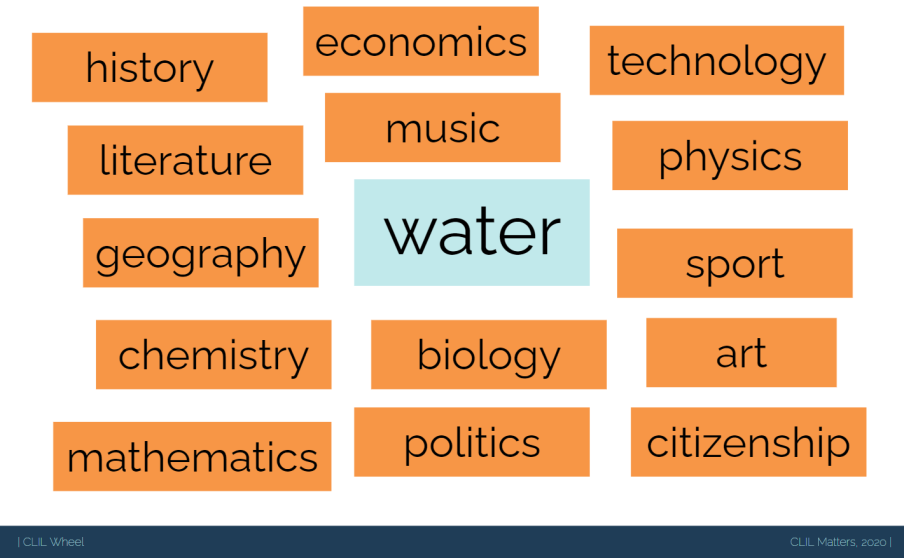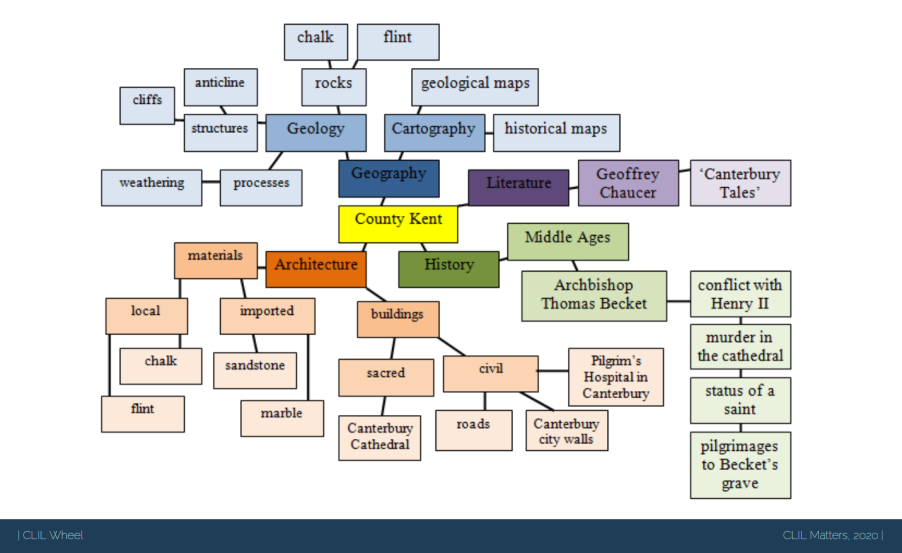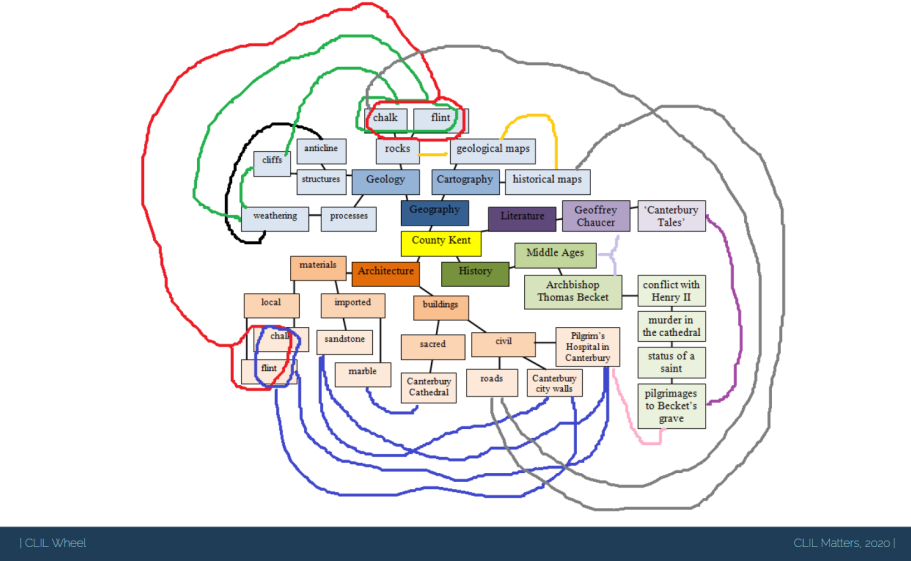In Favour of Content-enhanced Language Teaching
Acknowledgement
This text was originally published at
https://neurolanguagecollective.com/edition-8/in-favour-of-content-enhanced-language-teaching
Aleksandra Zaparucha is a Geography and English teacher from Toruń, Poland, with 30 years of experience in Geography and EFL/ESL teaching, teacher training, translating, examining and materials writing, including over 15 years of Content and Language Integrated Learning. She has worked extensively as a teacher and teacher trainer in Poland, France and the UK, as well as across Asia. Her website is https://clilmatters.com
The politics of languages
Education, including the languages of instruction and the availability of additional languages in the school system, has always been a highly political undertaking. I experienced it growing up behind the Iron Curtain: in Poland, as across the other states in the orbit of the Soviet Union, teaching and learning Russian was obligatory in all school types. It started at the age of 10 and lasted for 8 years, covering primary and secondary schools of all types. It was only in secondary schools that students could take up a second (West European) foreign language. In my case, it was an extended program of English: for four years I had 6 or 7 lessons of English a week (other languages students could choose from were French and German).
My parents did not speak English, we couldn’t travel to English-speaking countries, there was no internet and English-language newspapers were scarce. However, there was one thing that helped me see the sense of learning English. It must have been the first grade of high school when a classmate brought holiday brochures published by tour operators in the UK. That was it! You see, Geography was my main interest. These brochures offered me two in one: a look into the landscapes of the British Isles (those white cliffs and the Scottish hills!) and the English language describing it. There I found addresses of other tour operators across the country and I did write to them. These were not the letters administered as a practice by my English teacher - it was solely my initiative. As a result, I did get quite a collection of tourist brochures, which proved to be very useful as I started working as a teacher of English myself. The photos ended up decorating the classroom walls and the texts were used as classroom realia. My next step was to get quite a considerable number of the original National Geographic, bought from a second-hand book shop, but that was a different story. I found the language less comprehensible so I often just studied the photos and read the captions.
These were my ‘private’ undertakings. What the school itself offered me back then were culture studies, which meant going through British and American history, their political systems, literature, music - all potentially interesting, but not that much to me. My only ‘bright’ moment came before the strongly complex course in British history (I couldn’t remember all those kings named Henry or James and whether it was Henry VIII who had six wives or maybe Henry VI who had eight wives). I volunteered to prepare a lesson on the geography of the British Isles. I talked about the islands, seas and channels, rock types, tectonic faults, mountain systems, rivers, lakes and canals, the Gulf Stream and the weather patterns, and, last but not least, the extent of the last glaciation and the resulting London till. Unfortunately, in four years of my high school education that was the only moment where I could see my interest in Physical Geography transpire into the foreign language class.
The younger generation
Many years later, under a new political system, Russian was removed from the compulsory streak of foreign language education in Poland. Step by step, English education was introduced at grade 1 of primary school and became compulsory. So, when I had my own children, the situation was so much different. I - sadly - accepted they may not like geography as much as I do but I knew they needed a good command of English. Cassette recordings of children’s songs in English, extra lessons from kindergarten until high school exams (no excuses!), trips to London and other places in the UK, bringing books from charity shops in England - all good but could be futile if they themselves did not find this one thing that would turn English on for them. They did, but all completely differently. My eldest son was the one who was most unruly until he got into international relations studies and realised English opens doors to academic studies and to a career in human resources - in Poland - that is based on the everyday use of English. My daughter taught herself all about the use and functions of a graphic tablet via free tutorials in English. I remember her drawing on her tablet while listening to lectures in… psychology from Harvard! What a treat to mommy! My youngest son, unwilling to solve tests in English, got through language competitions in a lower secondary school with flying colours based on computer games (try to follow the commentary in English there!) and read all the works of H.P. Lovecraft and other authors like that in original - none administered by the school teacher of English.
Content-based instruction
Having a parent who is a teacher of English may help in language education, but not having one cannot be an excuse, especially today. Having access to extra language classes is an asset, but is no longer a prerequisite. What I would insist on, though, is language teachers realising - and accepting - that their position has changed irreversibly. They have - if they want - the key to their students’ engagement in the lessons of English. It is called content-enhanced language teaching (CELT) (or ‘soft’ CLIL, or content-based instruction - CBI, or content-based language teaching - CBLT – the English language does love acronyms). Although some consider CBI more a philosophy than a methodology, it does offer some fresh look at the content of additional language education.
The notion of content
Historically, the word content used to refer to the methods of grammar-translation, audio-lingual method, vocabulary or sound patterns in a dialogue form. Recently, however, it has been viewed as the use of subject matter as a vehicle for the second or foreign language teaching/learning in what is called linguistic or language immersion. Some authors insist content needs to be an academic matter of a given non-linguistic subject, while others suggest it can be any non-linguistic theme, topic or issue that the learners find interesting or important. In content-based language teaching/learning, the content can be viewed as the material that is cognitively engaging and demanding and goes beyond the target language or target culture. Whatever the exact definition, the major drive in the CBI is the notion that the language is taught – and learnt – within the context of the content. When students are engaged with more content and thus use the language as a tool to learn something new – they engage better and thus feed their intrinsic motivation. Other driving forces of the CBI are the use of more advanced thinking skills and lowered focus on the structure of the language. As such, this approach proves to be highly student-centred as it strongly depends on the students’ ability to use the language.
CBI practices
No matter which definition of the content we accept, the process of its integration with what is going on in a language classroom needs special attention. In the end, our goal is to make sure the students will use the language effectively to express the studied non-linguistic content. One set of the CBI practices to enable a natural content integration is offered by Stoller (2002). These are as follows:
- Extended input, meaningful output, and feedback on language and grasp of content
- Information gathering, processing, and reporting
- Integrated skills (using reading, writing, speaking and listening in natural classroom activities)
- Task-based activities and project work, enhanced by cooperative learning principles
- Strategy training to produce more metacognitively aware strategic learners
- Visual support, i.e. images, graphic organisers, language ladders etc.
- Contextualised grammar instruction
- Culminating synthesis activities (knowledge is displayed in writing and orally)
Soft CLIL parameters
Ball, Clegg and Kelly (2015) take a bit of a different stance. Derived from the so-called ‘hard’ CLIL, that is the approach where content drives the entire learning process, their 10 CLIL parameters partly, but not completely overlap with the eight practises mentioned above. According to these authors, they can – and should, be used also in a language classroom when the teacher and the students engage with non-linguistic content. The 10 CLIL parameters are as follows:
1. Conceptual sequencing
It means concepts need to be carefully positioned within the sequence specific for a given non-linguistic theme. For example, the concept of fractions needs to be taught before we explore the different ways those fractions are represented – ½ vs 0.5, that is vulgar vs decimal fractions.
2. Conceptual fronting
It is the concept taught that drives the learning process and thus dictates the language. For example, in the course of History, the indispensable grammar structure is the Simple Past Tense, and it needs to be used whether the students have mastered it before the content-driven lesson or not. It not only refers to the grammar structures but vocabulary and language functions as well.
3. Task as priority, language as vehicle
The specific task the teacher selects for the students is going to dictate the language. For instance, when studying the life cycle of a frog, the students need to use the language expressing the sequence of events (e.g. first, next, later, finally).
4. Guided multimedia input
Whatever we teach needs to be in a multi-modal form, including static visuals, animations and videos. All this needs to be guided, that is supported, for instance by pre-, while- and post- activities. What is important, is that this support should not only refer to the language and content but also the procedure we want to use in our teaching.
5. CLIL in Three Dimensions
Besides the language and the content, every lesson uses specific procedures. As such, they also need explicit teaching and learning. For example, if the students have never seen a Venn diagram or have never transferred data from a table into a bar graph, these specific procedures need extra time to be learnt.
6. Making key language salient
The language in CLIL includes the subject-specific vocabulary items, necessary grammar structures as well as language functions to be mastered (e.g. defining, hypothesising, comparing and contrasting or sequencing). As the students need to be able to use the language to discuss the subject-specific concepts, the indispensable language needs to be extra visible.
7. The text-task relationship
The element that lies between the reading or listening text – and ties them – are instructions. They also need to be something that the CLIL teachers plan carefully, as messy or unclear instructions may prevent the students from doing the task successfully.
8. Enhancing peer communication
Student-student interaction is a key to their understanding of the concepts taught. By talking about these concepts, students revise, re-tell, re-think and discuss the content topics. In doing so, we should encourage them to use the target language, but referring to L1 is not a drawback. On the contrary, it enables the students to make certain they understand the key concepts and then be more confident when reporting back in the target language. So, a CLIL teacher needs to make sure their students have a lot of opportunities to engage in conversations about the content.
9. Supporting student output
Output is everything that students produce, in any form, be it written, oral or visual. As such, it also needs support from the teacher. For example, we can provide a writing frame for a science experiment report or a substitution table that offers vocabulary and grammar structures needed for oral or written feedback to the task.
10. Cognition
It goes without saying that no students, including CLIL students, should sit in the classroom idly. They need to be engaged physically and/or mentally. Thus, CLIL teachers should employ cognitive techniques, such as questioning strategies or thinking routines.
CBI benefits
Content-based instruction offers multiple benefits to language teaching and learning. As it is based on non-linguistic subject content, it uses authentic language and texts. What is more, it can - and should be guided by learner interests and needs, included in the subject curriculum. The very target language thus becomes highly contextualised as it is embedded within the discourse relevant to a specific non-linguistic subject. This offers the learners a chance to make stronger cognitive and linguistic connections between what they already know and the new theme.
Flexibility of CBI
As CBI is meant to be used within the language classroom, teachers may be flexible in relation to the selected subject-specific theme and adapt the curriculum to the students’ interests. One approach worth exploring within the CBI is cross-curricular projects. They may be built around single themes, such as WATER (below) or TIME (phenomenon-based learning).

Language teachers can also explore a local area for cross-curricular topics, such as the one below built around the specificity of County Kent, UK.

The specific themes here can be correlated across the disciplines, as in the concept map.

Whatever the theme or topic, when employing CBI teachers should consider assessing not only the language but also the content. Not doing so would send the signal to the students that the content does not matter, whereas in CBI – and in fact in other approaches to content in language education (like soft CLIL or CBLT) the content is the element through which students learn the language. As such, it needs a proper place within the lesson, including assessment.
My language Post Scriptum
You might be wondering what happened to my command of Russian. Well, after about 20 years of literary no contact with that language, I started taking part in projects in post-Soviet states – Azerbaijan, Uzbekistan, Kazakhstan. I found myself able to read signs in Cyrillic and understanding people talking but quite struggling with producing anything meaningful beyond some super simple utterances. On my recent visit to Kazakhstan, though, when conducting CLIL training to subject teachers, I realised I could use Russian to help my trainees understand some concepts as their command of English wasn’t high enough. So, from time to time I used Russian - their second language and my third language, to communicate how to teach subjects through English – their third language and my second (their first language being Kazakh). The most precious moments were those when I started a sentence in English and switched into Russian in the middle of it – or the other way round – without even realising it! So recently, when searching for some crocheting tutorials online, I googled both English and Russian websites.
References
Ball, P., Kelly, K., Clegg, J. (2015) Putting CLIL into Practice, OUP
Bilash, O. (2011) Content Based Instruction, Best of Bilash: Improving Second Language Education, Retrieved May 2021 <https://bestofbilash.ualberta.ca/content.html>
Stoller, F.L. (2002) Content-Based Second Language Instruction: What is it? TESOL. Retrieved May 2021 <http://www.carla.umn.edu/cobaltt/CBI.html>
Please check the Pilgrims f2f courses at Pilgrims website.
Please check the Pilgrims online courses at Pilgrims website.
(Writing a Novel Harnessing the Power of) Naivety
Chris Walklett, UKIn Favour of Content-enhanced Language Teaching
Aleksandra Zaparucha, PolskaLearning from Teaching: A Life in ELT
Freda Mishan, IrelandMemories of Mr H.
Jamie Keddie, SpainReview of The New Normal ed. by Alan Maley
Jayashree Mohanraj, India